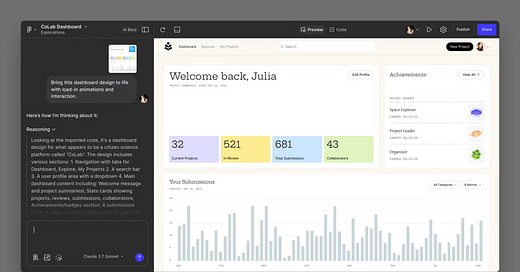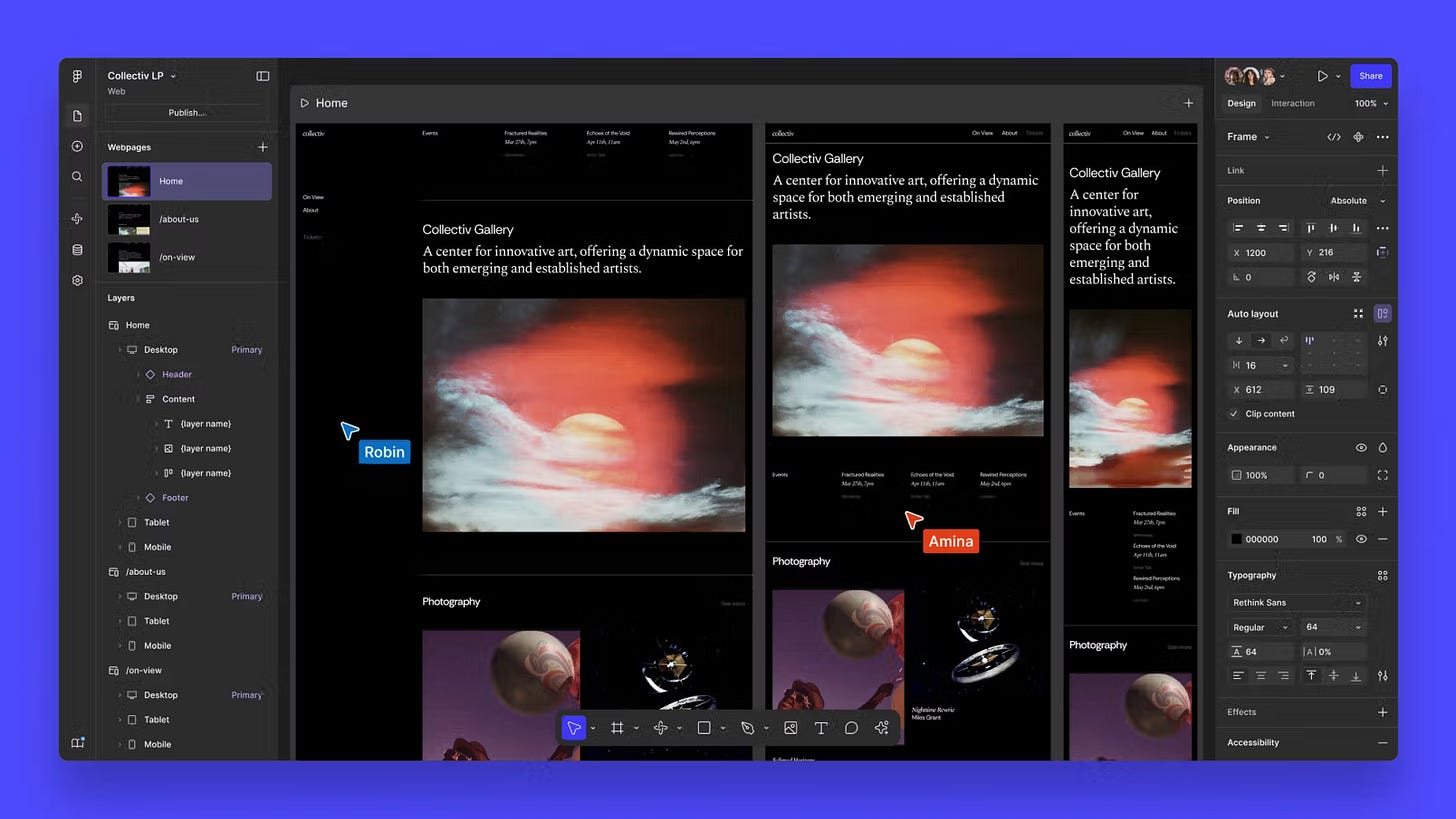Figma Config 2025: 4 new products that will change how we build digital products
From idea to live product in minutes — Figma's new suite of tools is redefining the digital creation landscape for startups and enterprises alike.
I just watched the Figma Config 2025 keynote, and I'm genuinely excited about what's coming. These new Figma announcements feel different — they're not just iterative improvements but fundamental shifts in how we'll approach digital product creation.
Here's my breakdown of what matters, why it matters, and how these tools might reshape our workflows.
The four new products that doubled Figma's portfolio overnight
Figma has essentially doubled its product offering, going from four to eight products. While all announcements were impressive, these four new additions stand out:
Auto Layout Grid
Figma Sites
Figma Make
Figma Buzz
Let's explore what each brings to the table.
Auto Layout Grid: the responsive grid we've been waiting for
Anyone who's tried to create complex layouts in Figma knows the limitations. The new Auto Layout Grid feels like the natural evolution we needed:
• It enables responsive grid structures that automatically adapt
• Items can span and fill cells intuitively
• The implementation aligns with CSS Grid properties
🧠 What's impressive here is how it bridges the design-development gap. The closer design tools align with actual code implementation, the smoother handoffs become between teams.
Figma Sites: from design to live website in minutes
This might be the most transformative of all the new Figma announcements. Figma Sites enables turning designs into responsive websites without writing code.
Key features that caught my attention:
• Paste existing designs and instantly create responsive variants
• Multi-edit capabilities across breakpoints (desktop, tablet, mobile)
• Use your existing Figma components and libraries
• Interactive elements with preset interactions (hover, parallax, draggable, typewriter)
• Direct publishing from Figma
I'm particularly interested in the upcoming features:
• Integrated CMS for dynamic content
• Code Layers for complex interactions with React/Tailwind
This could dramatically compress the timeline from concept to live MVP for early-stage startups.
Figma Make: AI-powered prototyping that generates code
This feels like magic — using natural language prompts to generate interactive, coded prototypes directly from your designs.
What makes it powerful:
• It understands your design structure and metadata
• Creates truly interactive prototypes (data visualisations, maps, 3D tools)
• Offers Point and Edit and Point and Prompt for targeted modifications
• Integrates with Figma Sites for seamless implementation
Figma Buzz: simplified content creation for marketing teams
As someone who's led marketing at multiple organisations, I appreciate the focus here on non-designers:
• Streamlined UI compared to Figma Design
• Easy access to brand libraries and templates
• Simple content editing for collaborators who aren't Figma power users
• Multi-edit across different assets
• Bulk create from CSV data for generating numerous assets quickly
Design bottlenecks can cripple marketing momentum. Figma Buzz seems positioned to solve exactly this problem.
Figma Draw: creative expression gets a serious upgrade
While not entirely new, the upgrades to Figma Design's drawing capabilities are substantial:
• Improved multi-shape vector editing
• New Shape Builder and Lasso Selection tools
• Radial Repeat layout tool
• Text on a Path
• Texture Effect and Progressive Blur effects
• Enhanced stroke options, including Brush Stroke
These improvements seem aimed at keeping illustrators and more creative designers within the Figma ecosystem rather than switching to dedicated illustration software.
What this means for the future of product development
Looking at these announcements collectively, I see several important implications:
1. The collapse of the design-development gap
The traditional workflow of design → handoff → development is being compressed dramatically. When designers can publish directly to the web, the dynamics of product teams fundamentally change.
2. AI as a collaboration multiplier, not a replacement
Figma's approach with Make isn't about replacing designers but rather expanding what's possible. It's about using AI to translate design intent into functional output faster.
3. Democratisation of creation
Tools like Buzz and Sites lower the barrier to creating professional digital products. This aligns perfectly with what I've observed in my Whatever Matters newsletter — more founders are building with smaller teams than ever before.
4. Speed as the ultimate competitive advantage
In today's market, the ability to iterate quickly is often more valuable than perfect execution. These tools all focus on accelerating the path from idea to implementation.
Is this the end of traditional development?
Not quite. Complex, highly customised products will still require dedicated engineering. However, the threshold of what can be built without code is rising dramatically.
➡️ The future belongs to hybrid teams — those who can leverage these no-code/low-code tools for 80% of their needs while applying focused engineering effort on the 20% that truly differentiates their product.
What excites me most is how these tools might enable more entrepreneurs to bring their ideas to life, especially those without technical backgrounds or significant funding.
What do you think about these announcements? Will they change your workflow? Let me know in the comments.





